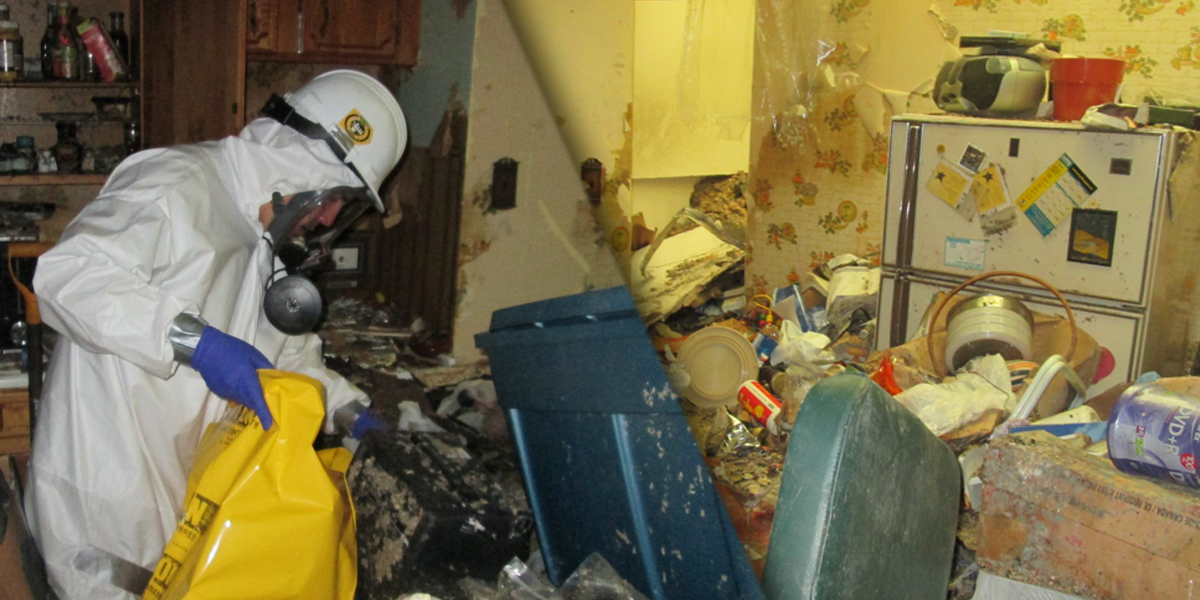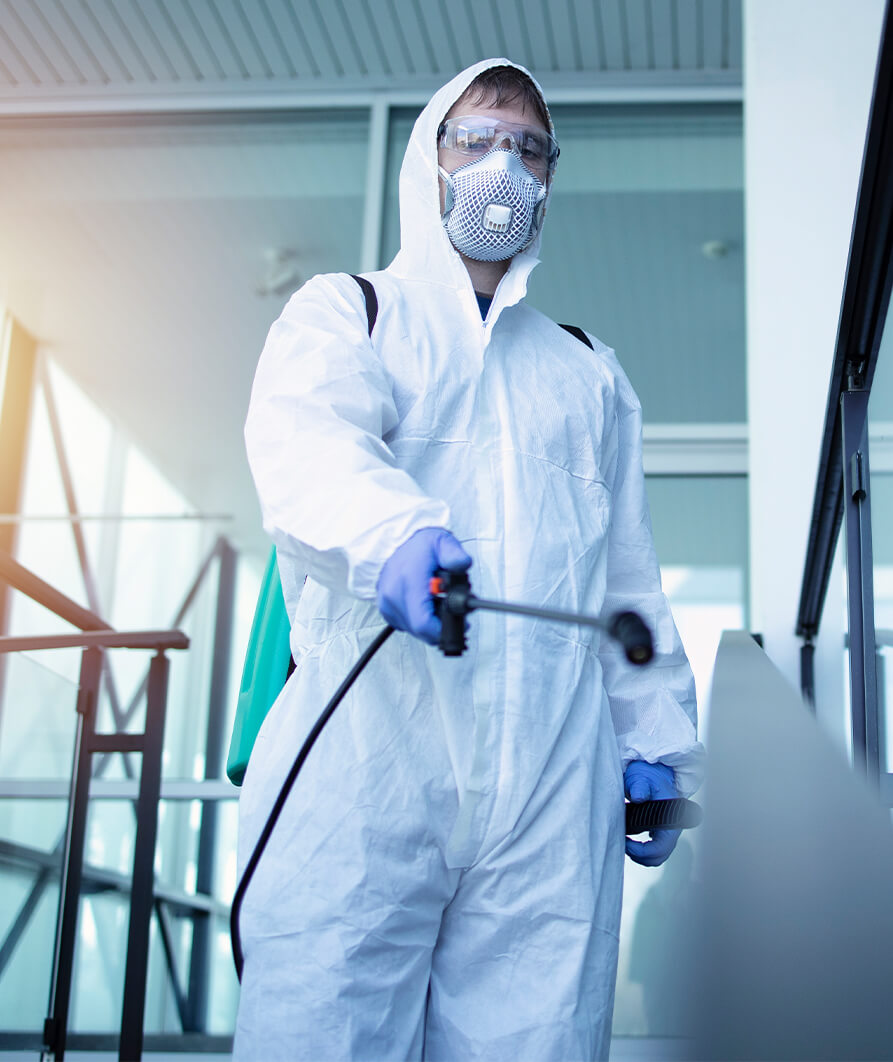Decomposition Death Clean Up: Specialized and Respectful Remediation
Decomposition Death Clean Up: Specialized and Respectful Remediation
Blog Article
Specialist Biohazard Cleanup for Criminal Offense Scenes, Trauma Incidents, and Infected Rooms
In the realm of specialist biohazard cleanup, careful interest to information and adherence to safety and security procedures are vital. When encountered with the results of a crime scene, trauma event, or any type of polluted area, the relevance of correct cleaning can not be underrated. The intricacies and threats related to biohazards call for specialized expertise and expertise to ensure effective remediation. As we look into the complexities of biohazard cleanup for these sensitive environments, a deeper understanding of the obstacles and essential treatments entailed will certainly arise, clarifying the important function of professional cleanup services in restoring security and comfort.

Significance of Biohazard Cleaning
Biohazard cleanup complying with criminal activity scenes and trauma events is critical for guaranteeing the security of people and the atmosphere. When these incidents take place, they typically leave a variety of biohazards such as blood, bodily liquids, and various other possibly infectious products. These materials can harbor unsafe microorganisms like viruses and microorganisms, posing serious health dangers if not effectively cleansed and sterilized.
Specialist biohazard cleaning services are educated to manage these hazardous products safely and efficiently. They have the essential devices, such as personal safety equipment and specialized cleansing representatives, to extensively sanitize the influenced areas. By handing over the clean-up to qualified experts, people can stay clear of exposure to hazardous pathogens and protect against the spread of contagious conditions.
Additionally, correct biohazard cleanup is important for safeguarding the environment. Inappropriate disposal of biohazardous products can contaminate dirt, water sources, and air, positioning a risk to wild animals and the community. By complying with strict cleaning protocols, professionals can ensure that biohazards are safely eliminated and thrown away according to guidelines, minimizing the risk of environmental contamination.
Types of Biohazards Encountered
Different hazardous materials commonly come across in crime scenes and trauma cases existing significant health and wellness threats if not managed properly. Blood and bodily fluids are among the most usual biohazards discovered in these situations.
An additional sort of biohazard commonly experienced is sharp objects like needles, damaged glass, and other items that can cause injuries and transfer infections. Chemical risks are likewise a problem, as crime scenes may consist of materials like tear gas, pepper spray, or drug manufacturing materials that need specific handling and disposal procedures to avoid additional damage.
Moreover, mold and mildew and germs development can occur precede where disintegration or prolonged direct exposure to dampness has actually taken place. These microorganisms can release toxins and irritants into the air, positioning breathing dangers to those subjected. In general, biohazard clean-up experts need to be well-appointed and skilled to successfully manage these different sorts of dangerous products to guarantee the security of themselves and others.
Equipment and Protective Equipment
When resolving the important task of dealing with biohazards experienced in crime scenes and injury cases, the use of appropriate equipment and safety gear is paramount to making certain the safety and security of individuals involved in the cleaning procedure. Personal safety equipment (PPE) such as handwear covers, coveralls, safety glasses, and masks are necessary to avoid direct contact with possibly hazardous substances. Respirators are essential when taking care of biohazards that might end up being air-borne, securing workers from breathing in dangerous fragments. Specialized cleansing tools like biohazard sharps, anti-bacterials, and bags containers are essential for the safe collection and disposal of infected products. Furthermore, durable tools such as industrial-grade cleaning representatives, foggers, and ozone generators might be needed to thoroughly sterilize the damaged area. Ensuring that all devices is properly kept, regularly checked, and made use of according to safety standards is important in decreasing the risk of exposure to biohazards throughout cleanup operations.
Cleanup Process and Techniques
Efficient and extensive cleaning of biohazardous products from criminal activity scenes and injury occurrences needs precise interest to information and adherence to stringent security procedures. The cleaning procedure generally involves a number of key actions. Originally, the area must be examined to determine the level of contamination and the ideal cleansing methods needed. Next off, all biohazardous materials, including blood, physical fluids, and cells deposits, should be very carefully removed and taken care of based on local laws.
Following the elimination of biohazardous materials, the damaged area undertakes a detailed cleaning and sanitation procedure. This step includes making why not find out more use of specialized cleaning up representatives and tools to guarantee that all traces of contamination are gotten rid of. After cleaning, the location undergoes rigorous screening to validate that it is safe and complimentary of any type of continuing to be biohazards.

Purification and Disposal Procedures
To ensure extensive purification and appropriate disposal of biohazardous materials, adhering to the thorough clean-up process, specific treatments need to be carefully followed with rigorous adherence to security protocols. Purification entails the removal or neutralization of contaminants to decrease the threat of direct exposure and spread of dangerous substances. This procedure generally consists of cleansing, sanitizing, and disinfecting the afflicted click resources location utilizing customized devices and EPA-approved chemicals.
Once decontamination is finished, appropriate disposal of biohazardous products is essential to avoid more contamination or damage. Biohazardous waste, such as physical liquids or blood-soaked products, should be meticulously collected, packaged, and identified according to governing standards. ATP testing. These materials are then delivered to licensed facilities for disposal with proper networks, guaranteeing compliance with neighborhood, state, and government regulations

Conclusion
Finally, specialist biohazard cleaning is critical for ensuring the effective and secure elimination of dangerous materials from criminal activity scenes, injury cases, and polluted rooms. By making use of specific equipment, safety gear, and adhering to appropriate cleanup procedures and methods, biohazard cleaning teams can effectively dispose and sanitize of biohazards, reducing the danger of exposure and damage to people and the atmosphere.
As we delve right into how to clean up blood from fabric the intricacies of biohazard cleaning for these sensitive settings, a deeper understanding of the difficulties and crucial treatments involved will arise, dropping light on the indispensable function of specialist cleanup solutions in bring back safety and tranquility of mind.
Professional biohazard clean-up solutions are educated to deal with these unsafe materials securely and effectively. By complying with rigorous cleanup protocols, specialists can ensure that biohazards are safely eliminated and disposed of in conformity with regulations, lessening the threat of environmental contamination.
In general, biohazard clean-up experts need to be skilled and well-appointed to effectively deal with these different kinds of hazardous materials to guarantee the security of themselves and others.
When resolving the critical job of dealing with biohazards come across in criminal activity scenes and injury cases, the application of proper equipment and protective equipment is paramount to ensuring the safety and security of individuals included in the clean-up process.
Report this page